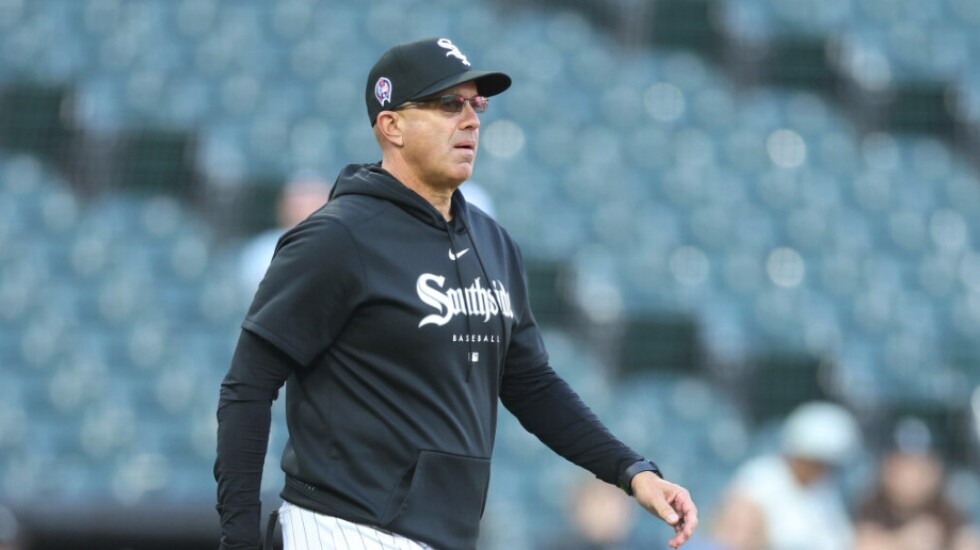
A second half sell-off and freefall has this White Sox team hurtling toward 100 losses, and the sixth-worst winning percentage in the franchise’s 124-year history.
It would take some soaring rhetoric to convince the public that the work needed to return this team to the postseason can be completed in a single offseason, as chairman Jerry Reinsdorf desires.
Manager Pedro Grifol says he’s abandoning the PR campaign.
“You’ll hear me say this a bunch moving forward, enough with the talk,” Grifol said pregame Friday. “Everybody just wants to see us win baseball games. I’m not going to sit here and promise anything, because nobody wants to hear it. They’ve heard it for a long, long time. It’s about us winning baseball games. Until April next year, a couple weeks into April, a couple of weeks into the season, that’s when everybody should have an opinion and make a decision whether they like what we put on the field or not. It’s all going to be based on wins and losses.”
On every level of the organization, this season has already been acknowledged as a failure. The results and lopsided losses don’t matter much until next April. But an 18-37 second half record entering Friday night includes performances that will surely be used to evaluate players and coaches going forward, and is rife with fuel for skepticism about next season.
The Sox’ best performing starter is Mike Clevinger, a pending free agent who spent the spring embroiled in an MLB investigation. Dylan Cease enduring his highest ERA since his rookie season and Michael Kopech, resigned to the bullpen after prolonged struggles, are the only likely starting pitching holdovers.
After years of meager returns for major free agent outlays for relievers, another bullpen spending spree feels unfathomable. But with the relief corps excavated by trade deadline deals, Grifol acknowledged that adding high-leverage relievers is an offseason area of need. Beyond the emergence of Gregory Santos, the Sox look strapped for internal options, though Grifol spoke highly of recently acquired Triple-A reliever Jordan Leasure.
And that’s just a pitching side of a team that, for the second-straight year, seems fundamentally limited on offense by poor plate discipline and an inability to drive the ball in the air. The Sox are last in baseball in walks (again), and first in ground ball rate.
It’s enough to enter next spring with few roster spots set in stone beyond Luis Robert Jr. in center field.
“My advice to everybody who’s going to come to our camp next year in 2024, if they truly want to play in the big leagues, they’ve got to come in with that mindset because they’re going to have an opportunity to, they really are,” Grifol said. “If you’re coming to spring training with us in 2024 and you really have goals to make a big league team, you’re probably not going to have a better opportunity than with the 2024 White Sox.”
Prospects like Leasure, Colson Montgomery, Bryan Ramos and Nick Nastrini might have the ability to make spring roster battles interesting in any year. And while Grifol said he hasn’t spoken to new general manager Chris Getz about budget, he does anticipate an active offseason.
But the tone of open tryouts in spring, even if it’s not too dissimilar from the tone Grifol tried to set at times this past spring, won’t convince anyone that the Sox will have a roster capable of flipping this season’s win-loss totals by next February.
Luckily, convincing people is no longer the focus.
“I’m done with talking about any type of core or talent or talent on paper,” Grifol said. “They don’t want us to prove it in front of a microphone. That doesn’t mean anything to me. That doesn’t mean anything to them. Even if I was a fan, it wouldn’t mean anything to me either. We’ve just got to prove it on the field.”







